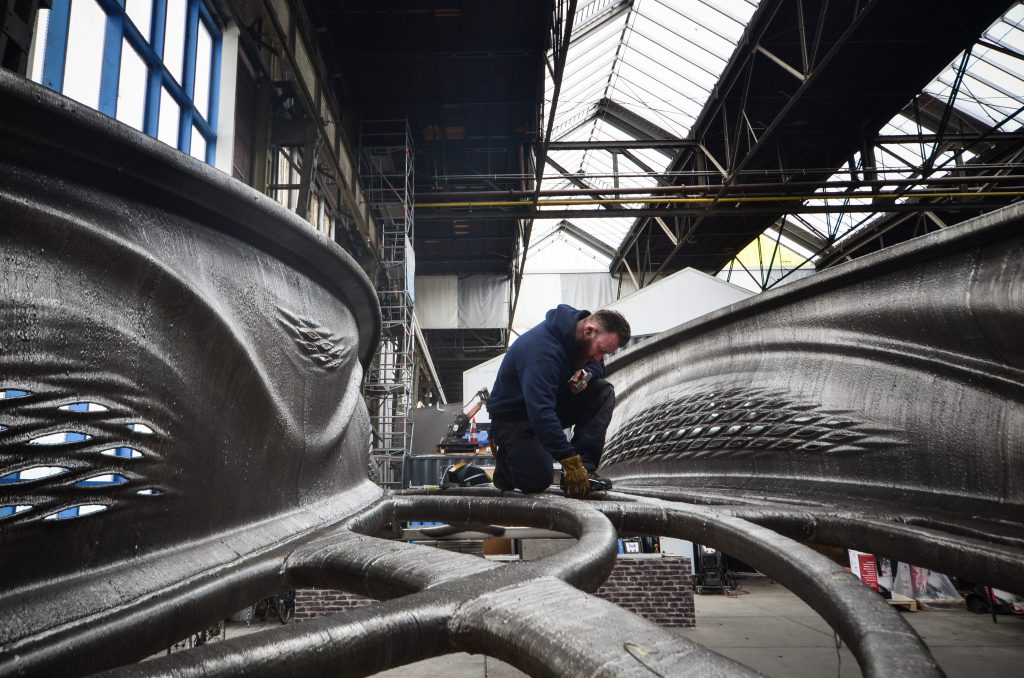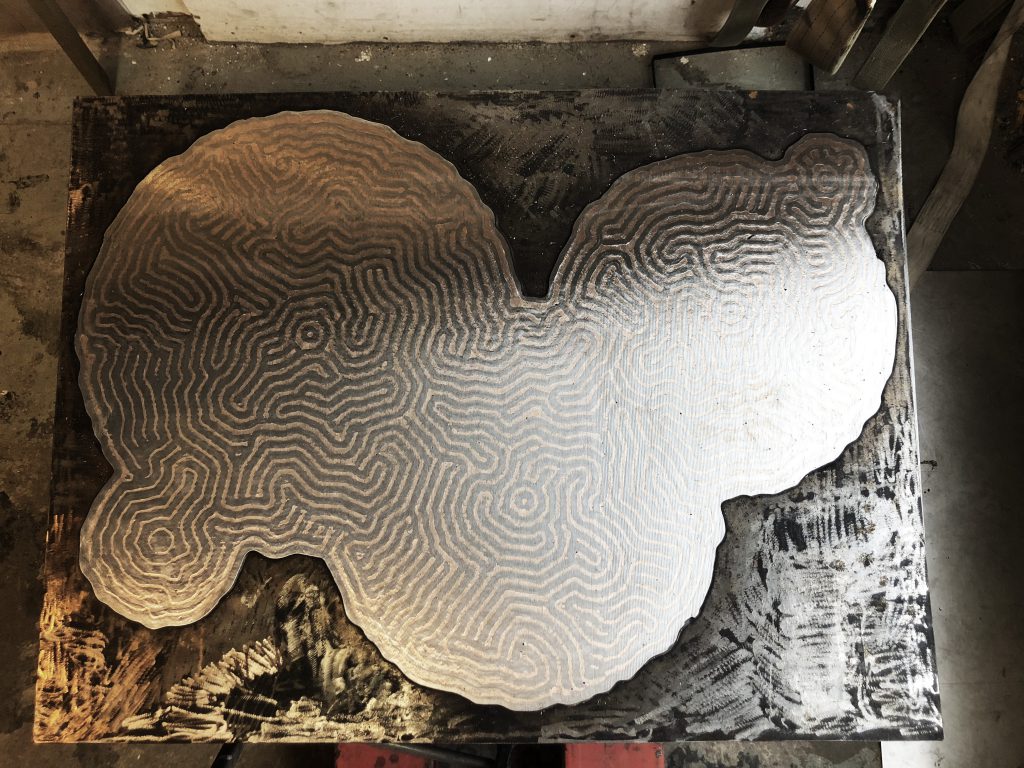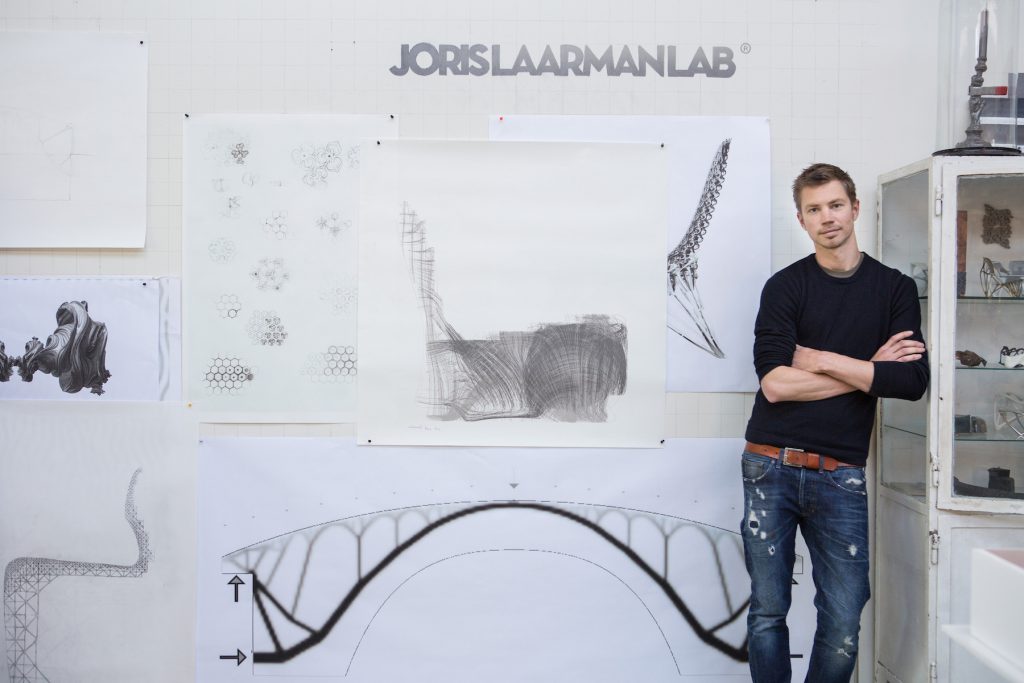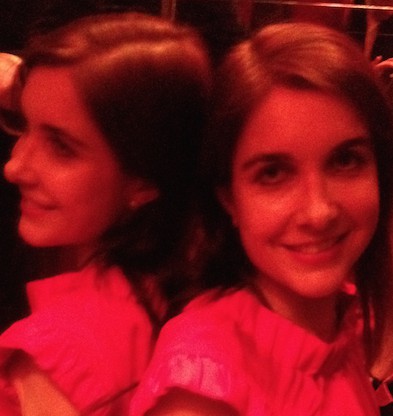Joris Laarman is a modern-day pioneer, inventing algorithms and robots to produce intelligent furniture pieces that blur the boundaries between the digital and physical worlds.
Now the innovative Dutch designer is on the cusp of his biggest achievement: the first 3D-printed bridge to be manufactured by robots. "The bridge is a dream," Laarman says about the futuristic, sci-fi project. "It's something that's never been done before and is remarkable in terms of scale and technology."

Laarman's 3D-printed bridge is scheduled to be finished in October of this year. His startup company MX3D, which develops robotic metal 3D print technology, has printed all the parts for the entire span of the 12-metre-long structure.
The printing, which was carried out in numerous stages in the MX3D workshop, took six months. Now it has to be assembled and the finishing touches, such as coating the bridge and placing the deck, need to be carried out. Meanwhile, Laarman is waiting impatiently for the City of Amsterdam to renovate the canal's walls prior to the bridge's installation.

The groundbreaking bridge is a labour of love for 38-year-old Laarman. Developing the sinuous forms of its ornamental yet structural design entailed a prolonged back-and-forth between algorithms and drawing.
"First, we had an algorithm create the results based on stress analysis, then we started drawing; the drawing would go back into the algorithm and this process was repeated until we were satisfied," Laarman explains. "The design is organic but smart at the same time. We're trying to make something 10 years before you'd think it would be possible. The most challenging thing, though, has been all the politics, from getting the funds to getting authorisation to install the bridge."
The bridge's "smartness" partly lies in how the design is lighter where the mechanical compression forces are reduced, and denser where they are strengthened. MX3D has collaborated with the Alan Turing Institute, a data science research lab in London, as well as several international engineering companies to make a so-called "sensor network" to monitor the bridge's capacity during testing procedures and after its instalment.

MX3D Bridge Visual by Joris Laarman
"This data will allow us to teach the bridge to understand what is happening on it, like how many people are crossing it and how the weight affects the bridge's material," says Laarman, who has partnered with Arup on the construction. The data from the sensors will be input into a "digital twin" of the bridge – a computer model that will reflect the physical bridge's performance in real time.
"Everything that we're making is non-standardised, every little detail is different, so it requires a completely new approach," Laarman continued. "It's very exciting to be the first because you have an advantage over everyone else in the industry. Working with robots allows you to create technically complex works that could never be made with industrial machinery. It's the future of digital craftsmanship – a cross between blacksmithing and highly digital design."
Laarman has always been passionate about marrying the decorative with the functional. For his graduate project at Design Academy Eindhoven in the Netherlands, he made the rococo Heatwave radiator that diffuses heat through its arabesques. Eschewing the sober style of his professor Gijs Bakker, co-founder of Droog Design, Laarman aimed to make something "totally over the top" with exuberantly curved lines.
The piece was snapped up by, amongst others, the Cooper Hewitt, Smithsonian Design Museum in New York, which has staged a traveling exhibition of Laarman's work that highlights his ingenious ways of experimenting with technology. The show, Joris Laarman Lab: Design in the Digital Age, is currently at the High Museum of Art in Atlanta and will travel to the Museum of Fine Arts Houston in June.

MX3D Bridge Visual by Joris Laarman
Laarman's insatiable curiosity for combining science, technology and creativity is underscored throughout the exhibition. For instance, in 2006, he used an imaging and simulation algorithm created by a subsidiary of General Motors, which he sourced online, to create the Bone Chair. This enabled him to make an ‘efficient, beautiful and comfortable shape’ without needing to partner with an industrial manufacturer.
In 2010, for the Asimov installation, he programmed four robots to fold a chair out of sheets of aluminium. For the Makerchair (2014), Laarman divided the design into fractions, digitally fabricated multiple 3D parts and used CNC milling machines; the lightweight parts were fitted together like a three-dimensional puzzle to create the chair. Then for the bronze Butterfly Screen (2016), he mastered computer-generated aesthetics to conceive a design based on hexagonal cell division.
The precursor to the bridge project, however, is the stainless steel Dragon Bench. The first piece made with the metal printer MX3D in 2014, its elegantly curved, intersecting lines were printed in mid-air thanks to combining the MX3D industrial robot with a welding machine.
"After making the Dragon Bench, I had the feeling that the MX3D printer was a more important tool than for merely creating gallery projects,’ Laarman recalls. "To enable the company to grow, we needed a poster project. After visiting a software company in San Francisco, we had the idea of making something really extraordinary, like the bridge, which is a very symbolic project and a good visual story about where we are, time-wise, with technology."
Laarman's work still shifts between scales, from architectural ambitions to sculptural furniture. On view for the first time in his current exhibition Gradients at Kukje Gallery in Seoul is a new installation of Turing Tables, a series of 15 tables whose patterns have been developed from an algorithm and were printed with the robots in steel and bronze.

Turing Table by Joris Laarman
The project is named after the great mathematician Alan Turing, who towards the end of his life wrote his first and last paper on biology and chemistry. Detailing how a type of chemical reaction ought to produce many patterns seen in nature, in the following decade's scientists found the speculations of the so-called Turing patterns a reality. "Each table is unique and they all grew out of this algorithm that generates patterns that grow larger and larger,’ he says of the tables, which come in small, medium and large. A video installation on the wall shows viewers how the algorithm worked."
So how else does Laarman imagine using the MX3D printer in the future? "The kind of sculptural objects printed on an architectural-size scale that we could make are very broad, from designing facades on buildings to industrial applications like shipping," he replies.
What fascinates Laarman is how he finds himself in the transitionary period from the industrial to the digital era. As he says: "The industrial age was moved by geometric forms and primary colours whereas the digital age is more about organic forms, geometric gradients, and everything becoming fluid. I'm trying to figure out how far I can go with technology, in terms of aesthetics and applications."



